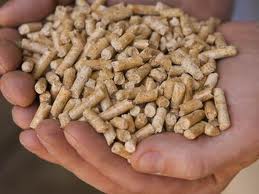According to a newly released report by the United States Industrial Pellet Association (USIPA) and other members of the Bridging the Biomass Coalition, the use of wood biomass for power generation produces significant carbon savings. The report shows that these savings can provide long-term benefits to the environment.
The report states, “Industrial wood pellets from the United States are an essential component of Europe’s power mix and provide an abundant, sustainable and carbon beneficial energy source that keeps the lights on in millions of homes and businesses.”
Through their study, Forest Sustainability and Carbon Balance of EU Importation of North American Forest Biomass for Bioenergy Production have proven that using industrial wood pellets for electricity makes an 'immediate or very rapid contribution to climate change mitigation.'
There study found that energy production from industrial wood pellets resulted in substantial carbon savings over time. These savings far exceeded any temporary carbon debt or foregone sequestration.

USIPA executive director Seth Ginther explains, “Industrial wood pellets from the United States are an essential component of Europe’s power mix and provide an abundant, sustainable and carbon beneficial energy source that keeps the lights on in millions of homes and businesses. By displacing fossil fuels, industrial wood pellets are decarbonizing Europe.”
Wood pellets are made from compacted sawdust or other wastes from sawmilling and other wood products manufacturing. Other woody biomass sources include palm kernel shell, coconut shell, and whole-tree removal or tree tops and branches leftover after logging and which otherwise help replenish soil nutrients. Pellets are extremely dense and can be produced with a low moisture content that allows them to be burned with very high combustion efficiency.
USIPA’s report focused on the southeast region of the United States and British Columbia in Canada. Both are primary sources of wood pellets.
"USIPA members rely on low-grade wood fiber such as tree tops and limbs, sawmill residues and low quality wood that does not meet the standards for lumber processing," the report adds.
Back in 2011 twelve prominent U.S. environmental organizations adopted a policy setting a high bar for government incentives of biomass energy, including wood pellets. The policy states that, in part, "biomass sources and facilities qualifying for (government) incentives must result in lower life-cycle, cumulative and net GHG and ocean acidifying emissions, within 20 years and also over the longer term, than the energy sources they replace or compete with."
The wood products industry is concerned that if large-scale use of wood energy is instituted, the supply of raw materials for construction and manufacturing will be significantly curtailed.
Due to the rapid increase in wood pellet popularity since 2005, pellet availability and cost may be an issue in the near future. This is an important consideration when buying a pellet stove. However, current pellet production is increasing and there are plans to bring several new pellet mills online in the U.S.
Edited by Alisen Downey
 Internet Telephony Magazine
Click here to read latest issue
Internet Telephony Magazine
Click here to read latest issue CUSTOMER
CUSTOMER  Cloud Computing Magazine
Click here to read latest issue
Cloud Computing Magazine
Click here to read latest issue IoT EVOLUTION MAGAZINE
IoT EVOLUTION MAGAZINE




